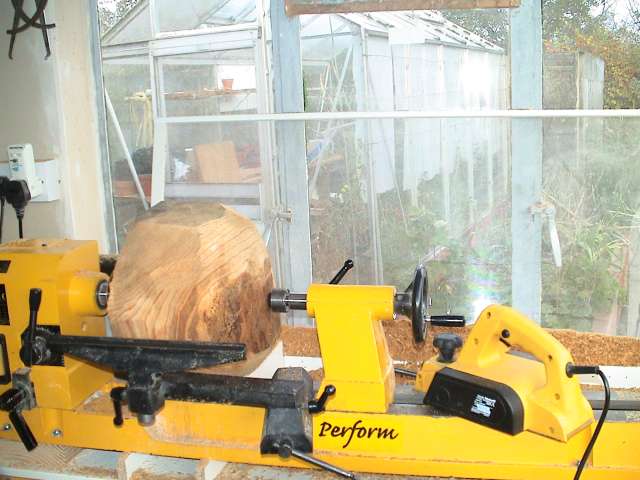Sorry about seeking attention so much .. but I've bottled out of today's project pending some advice/suggestions if poss please.
Project : Shaped lamp, max diam 140mm ish, height 280mm ish, in cheap (<£4/piece) Western Cedar (4.5kg)
Objective : build skills on largest diam piece lathe can reasonably take between centres with tool rest in place
Pic of piece on lathe and spinning are the last two in blog (see below for link)
To start I set speed at lowest (550rpm) on middle belt and have carefully cranked it up to 1000 to see if secure ..it is.
Dont fancy getting very close to it at 1000rpm ..lol..that might just be lack of confidence though!
My nervousness is just approaching it with the roughing gouge...once in the round I think I'll be ok
Questions :
- What speed for roughing a 6x6x12 block (4.5kg)with all corners on? (is 550 ok ? ..I could shift belt ...pfft.. and go to lower to 250rpm ish)
- Would it be massively better to hand cut each of the 4 corners down to octagon shape or, with care, should it be ok?
- Any other tips welcome!
cheers
Keith
Project : Shaped lamp, max diam 140mm ish, height 280mm ish, in cheap (<£4/piece) Western Cedar (4.5kg)
Objective : build skills on largest diam piece lathe can reasonably take between centres with tool rest in place
Pic of piece on lathe and spinning are the last two in blog (see below for link)
To start I set speed at lowest (550rpm) on middle belt and have carefully cranked it up to 1000 to see if secure ..it is.
Dont fancy getting very close to it at 1000rpm ..lol..that might just be lack of confidence though!
My nervousness is just approaching it with the roughing gouge...once in the round I think I'll be ok
Questions :
- What speed for roughing a 6x6x12 block (4.5kg)with all corners on? (is 550 ok ? ..I could shift belt ...pfft.. and go to lower to 250rpm ish)
- Would it be massively better to hand cut each of the 4 corners down to octagon shape or, with care, should it be ok?
- Any other tips welcome!
cheers
Keith



































